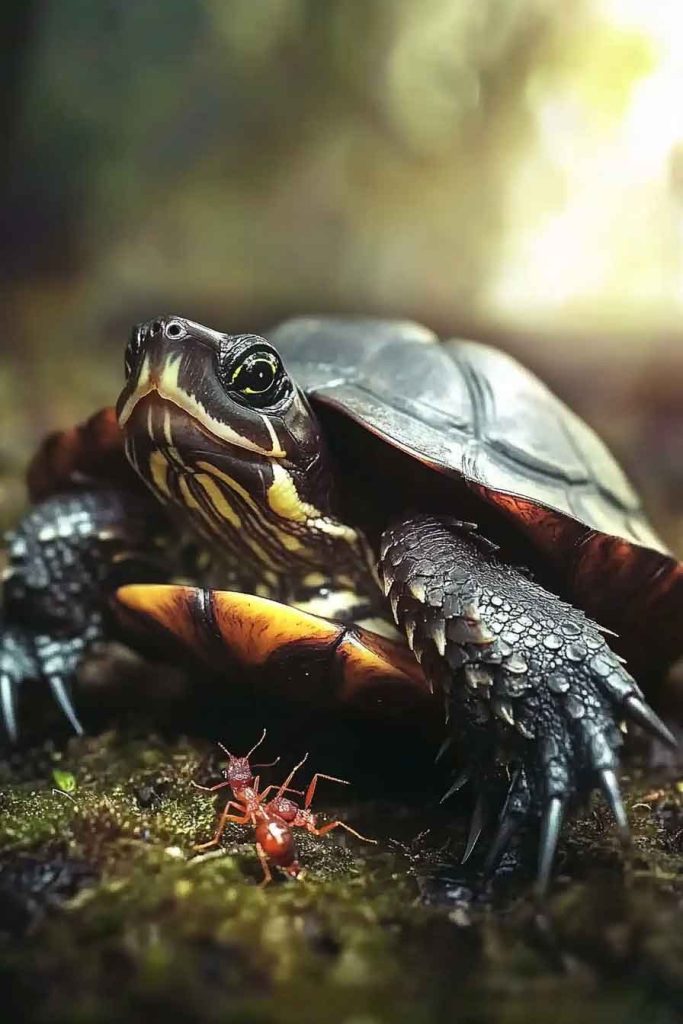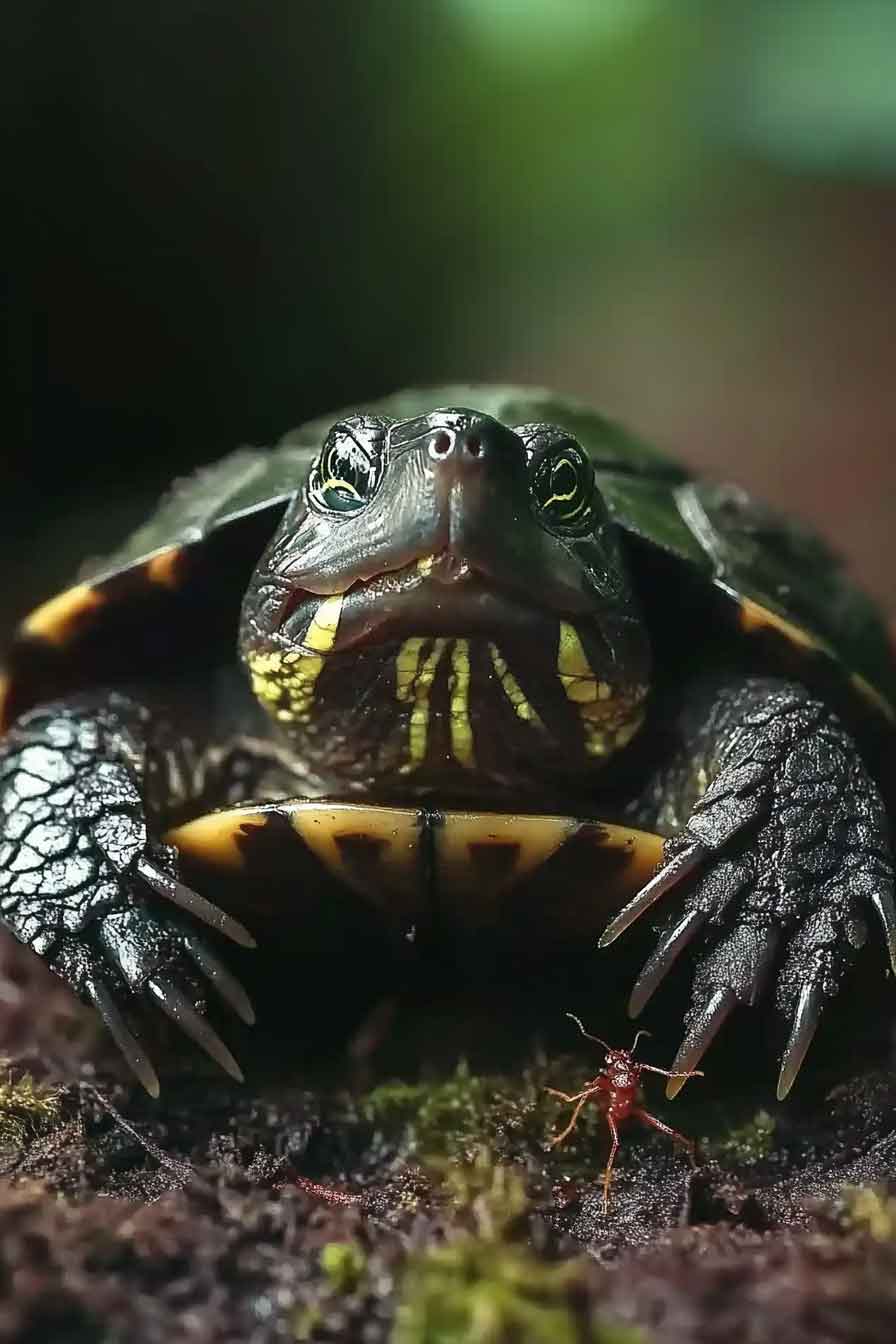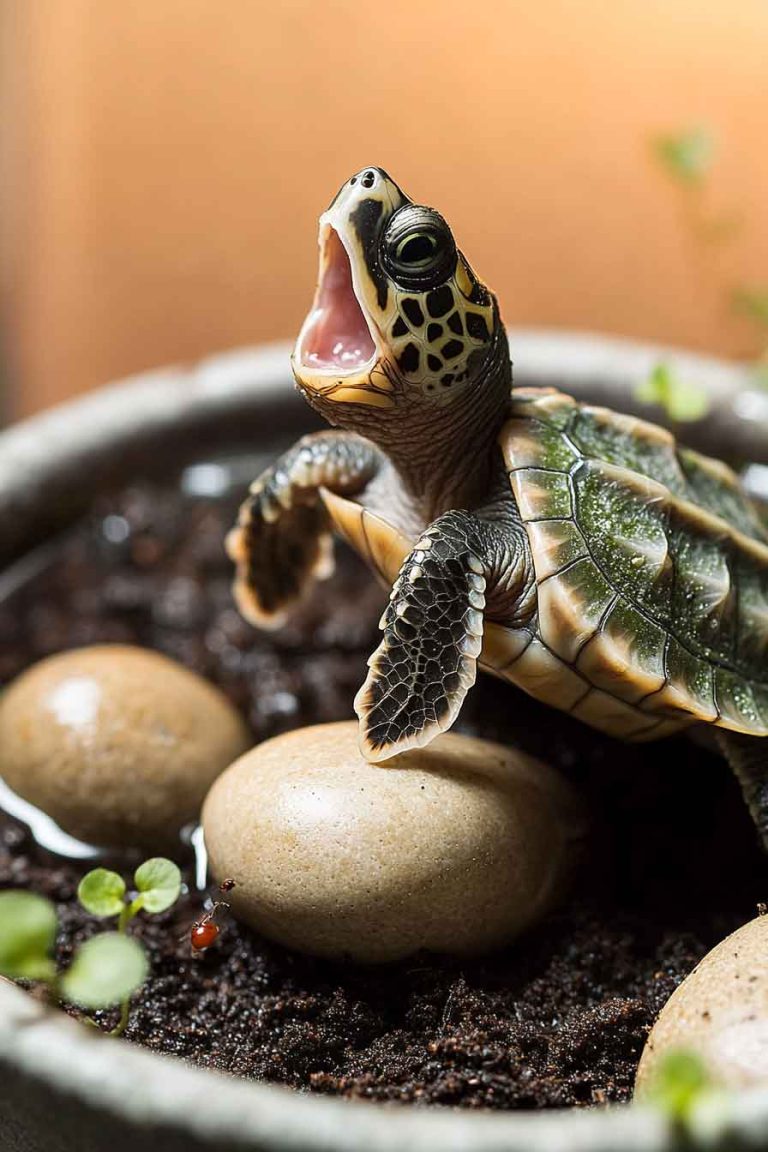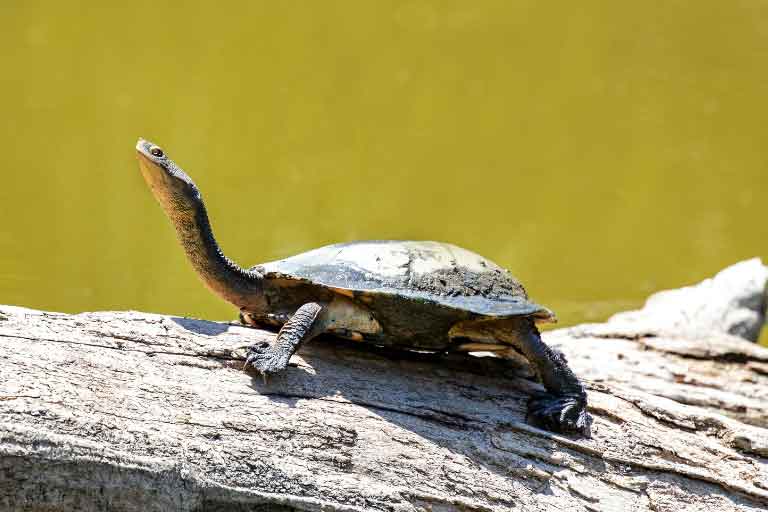Do Mud Turtles Bite? Are They Aggressive or Friendly?
Hey there, turtle lovers! Today, I want to talk to you about something really important if you’re thinking about getting a mud turtle as a pet. Do mud turtles bite? Are they friendly little guys, or should you be careful around them? I’ve been working with turtles for years, and I’m here to share everything…
Hey there, turtle lovers! Today, I want to talk to you about something really important if you’re thinking about getting a mud turtle as a pet. Do mud turtles bite? Are they friendly little guys, or should you be careful around them?
I’ve been working with turtles for years, and I’m here to share everything I know about mud turtles and their behavior. Let me tell you – these small creatures might look cute and harmless, but they can surprise you!
The short answer is yes – mud turtles can bite, and sometimes they do get aggressive. But don’t worry! I’m going to explain why this happens and how you can avoid getting bitten. By the end of this article, you’ll know exactly how to handle your mud turtle safely.
Understanding Mud Turtles: The Basics
Before I dive into the biting behavior, let me help you understand what mud turtles are all about.
Mud turtles are small aquatic turtles that belong to the family Kinosternidae. They’re close relatives of musk turtles, and honestly, they share a lot of similar behaviors. In the wild, you’ll find them living in shallow, muddy waters – that’s how they got their name!
Some popular species that people keep as pets include:
- Eastern Mud Turtles
- Mississippi Mud Turtles
- Yellow Mud Turtles
- Scorpion Mud Turtles
These turtles are pretty small, usually growing to about 3-4 inches in length. Their small size makes them attractive pets, but I want you to know that size doesn’t mean they can’t defend themselves!
Do Mud Turtles Really Bite?
Yes, they absolutely do! I’m not going to sugarcoat this for you. Mud turtles can and will bite when they feel the need to protect themselves.
Now, here’s what I’ve learned from my experience: mud turtles are actually shy creatures by nature. They don’t go around looking for trouble or trying to bite everyone they see. But when they feel scared, threatened, or uncomfortable, their natural instinct kicks in – and that instinct tells them to defend themselves.
How Do Mud Turtles Bite?
You might be wondering – do mud turtles have teeth? The answer is no. None of the turtle species have teeth. Instead, they have something that can be just as effective: a sharp, hooked beak.
Think of it like a bird’s beak, but much stronger and designed for crushing. Mud turtles use this beak along with their powerful jaw muscles to catch and eat their food. They can crush snail shells, crack open small insects, and yes – they can give you a painful nip if they want to!

How Painful Is a Mud Turtle Bite?
I’m not going to lie to you – a mud turtle bite can hurt! Let me break down the bite force for you:
- Eastern Mud Turtles can bite with a force of about 35N (Newtons)
- Scorpion Mud Turtles are even stronger, with a bite force around 38N
Now, I know these numbers might not mean much to you. Let me put it this way: it feels like a sharp pinch or a strong squeeze. It’s not going to be as bad as a snapping turtle bite, but it’s definitely enough to make you say “ouch!”
The bite can leave a bruise, and in some cases, it might even break the skin. That’s when things get more serious, but I’ll talk about that later.
Are Mud Turtles Aggressive?
This is where I want to clear up some confusion. Mud turtles aren’t naturally aggressive animals. They don’t wake up in the morning thinking, “I’m going to bite someone today!”
What I’ve noticed is that mud turtles are actually quite calm when they’re comfortable and well-cared for. The problem comes when something makes them feel unsafe or stressed.
The Difference Between Wild and Pet Mud Turtles
In the wild, mud turtles have to be cautious. They’re small creatures with lots of predators around them – birds, raccoons, larger fish, and other animals would love to make a meal out of them. So being defensive is just smart survival!
When you bring a mud turtle into your home as a pet, it doesn’t forget those wild instincts. It takes time for them to trust you and feel safe in their new environment.
I’ve seen many pet mud turtles that are quite docile and comfortable with their owners. But I’ve also seen plenty that remain skittish and defensive. Every turtle has its own personality!
Why Do Mud Turtles Bite? Let Me Explain the Reasons
Over the years, I’ve identified several reasons why mud turtles might bite. Understanding these reasons is super important if you want to avoid getting bitten.
Reason 1: Self-Defense (The Main Reason)
This is the number one reason, hands down. When you reach for a mud turtle, especially if you approach from above or move too quickly, the turtle thinks you’re a predator. Its brain says, “Danger! Protect yourself!”
Remember, in the wild, things that come from above are usually birds trying to grab them. So your hand looks like a threat to your turtle.
Reason 2: Poor Living Conditions
I can’t stress this enough – where and how you keep your mud turtle matters a lot!
If your turtle doesn’t have enough space to swim, dive, and bask properly, it’s going to get stressed. A stressed turtle is a grumpy turtle, and a grumpy turtle is more likely to bite.
Here’s what I recommend for minimum tank sizes:
- One mud turtle: At least a 40-gallon tank
- Two mud turtles: At least a 75-gallon tank
- Outdoor pond: Even better, if you have the space!
When turtles are cramped together, they also compete for food and basking spots. This makes them irritable and more aggressive toward each other and toward you.
Reason 3: Mistaking Your Finger for Food
This happens more often than you’d think! If you hand-feed your mud turtle regularly, it starts to associate your fingers with food time.
I’ve made this mistake myself. You bring your hand close to the turtle, and snap! It goes for your finger thinking it’s a tasty worm or piece of fish.
This isn’t really aggression – it’s just confusion. But it still hurts!
Reason 4: Handling During Mating Season
Male mud turtles can get more territorial and aggressive during mating season (usually spring and early summer). I’ve noticed they’re more likely to bite during this time.
Reason 5: Illness or Pain
Sometimes, if your turtle is sick or in pain, it might bite more readily. It’s trying to tell you, “Leave me alone, I don’t feel good!”
If your normally calm turtle suddenly becomes aggressive, I recommend checking for signs of illness and maybe visiting a vet.
Other Defense Mechanisms Besides Biting
Biting isn’t the only way mud turtles defend themselves. Let me tell you about another interesting behavior I’ve observed.
Some mud turtles will release a foul-smelling liquid from glands near their tail when they’re scared. This liquid is called musk, and trust me – it smells terrible! It’s similar to what skunks do.
If you smell this odor, it’s your turtle’s way of saying, “I’m really scared right now! Back off!”
I always tell people: if you can smell your turtle’s musk, don’t try to handle it. Put it down gently and give it some space to calm down.
Can a Mud Turtle Bite Off Your Finger?
I get asked this question a lot, and I want to give you a clear answer: No, a mud turtle cannot bite off your finger or toe.
While their bite is painful and can break the skin, they simply don’t have the jaw strength to sever a finger. That’s something only much larger turtles like alligator snapping turtles can do.
However, a mud turtle bite can still cause:
- Bruising
- Puncture wounds
- Bleeding (if it breaks the skin)
- Pain that lasts for several hours
And here’s the part that worries me most: the risk of infection.

The Real Danger: Salmonella Infection
This is serious, and I need you to pay attention to this part.
Turtles, including mud turtles, often carry Salmonella bacteria. This bacteria lives in their digestive system and doesn’t usually harm the turtle itself. But it can make humans very sick.
When a mud turtle bites you hard enough to break the skin, there’s a chance of getting a Salmonella infection. The symptoms can include:
- Fever
- Stomach cramps
- Diarrhea
- Nausea and vomiting
- Headache
These symptoms usually show up 6 hours to 6 days after exposure. For most healthy adults, Salmonella causes a miserable few days but isn’t life-threatening. However, it can be very dangerous for:
- Young children
- Elderly people
- Pregnant women
- People with weakened immune systems
This is why I always emphasize proper hygiene when handling turtles!
What Should You Do If a Mud Turtle Bites You?
Don’t panic! I’m going to walk you through exactly what to do.
Step 1: Stay Calm
I know it’s hard when something bites you, but try to stay calm. If you jerk your hand away or make sudden movements, the turtle will bite down harder.
Step 2: Don’t Pull Away
This is super important! If you try to pull your finger out of the turtle’s mouth, you’ll make the injury worse. The turtle might also panic and bite down with more force.
Step 3: Put the Turtle in Water
Gently lower the turtle into its water. This usually makes it feel safer and more likely to let go. You can also try holding it still and waiting patiently.
Step 4: Clean the Wound Immediately
Once the turtle lets go, wash the area thoroughly. Here’s how I do it:
- Run the bite under cool, clean water for at least 5 minutes
- Use mild soap to wash around the wound
- Apply an antiseptic or antibacterial ointment
- Cover with a clean bandage
Step 5: Watch for Signs of Infection
Over the next few days, keep an eye on the bite. Look for:
- Increasing redness around the wound
- Swelling
- Warmth in the area
- Pus or discharge
- Red streaks spreading from the wound
- Fever
Step 6: See a Doctor If Needed
You should see a doctor if:
- The bite broke through the skin
- You see any signs of infection
- You develop fever or stomach symptoms
- The pain is severe
- You’re in one of the high-risk groups I mentioned earlier
The doctor might prescribe antibiotics to prevent or treat infection. Don’t skip this step if you’re worried!
How to Avoid Getting Bitten by Your Mud Turtle
Now let me share my best tips for avoiding bites in the first place. Prevention is always better than treatment!
Tip 1: Provide Excellent Living Conditions
I’ve said it before, but I’ll say it again: a happy turtle is a less bitey turtle!
Make sure your mud turtle has:
- A large enough tank (minimum 40 gallons)
- Clean, filtered water
- A basking area with proper lighting
- The right water temperature (75-80°F)
- Hiding spots where it feels secure
- A varied, nutritious diet
When your turtle’s needs are met, it’s much calmer and less defensive.
Tip 2: Approach from Behind
Here’s a technique I use all the time. When you need to pick up your mud turtle, approach it from behind rather than from the front or above.
Gently press down on the back of its shell. This encourages the turtle to tuck into its shell rather than snap at you. Once it’s tucked in, you can safely pick it up.
Tip 3: Support the Turtle Properly
When you do pick up your mud turtle, hold it correctly:
- Support it from underneath with your palm
- Keep your fingers away from the head
- Hold it firmly but gently (don’t squeeze!)
- Keep it low in case it wriggles free
Tip 4: Minimize Unnecessary Handling
I know it’s tempting to play with your pet, but mud turtles aren’t like dogs or cats. They don’t enjoy being handled and petted.
Only pick up your turtle when you really need to:
- For health checks
- For tank cleaning
- For weighing
- For necessary transport
The less you handle your turtle, the less stressed it will be, and the less likely it is to bite.
Tip 5: Wash Your Hands Before Handling
If your hands smell like food, your turtle might mistake your fingers for a snack! I always wash my hands with unscented soap before handling my turtles.
Tip 6: Never Startle Your Turtle
Sudden movements and loud noises can startle your mud turtle into defensive mode. Move slowly and calmly around the tank. If your turtle can see you coming, it’s less likely to feel threatened.
Tip 7: Learn Your Turtle’s Body Language
After spending time with your mud turtle, you’ll start to recognize its moods:
- Calm: Swimming normally, basking peacefully
- Curious: Approaching you when you’re near the tank
- Defensive: Hissing, open mouth, attempting to bite
- Scared: Hiding, retreating into shell, releasing musk
If your turtle shows defensive or scared behaviors, don’t try to handle it!
Tip 8: Build Trust Gradually
If you just got your mud turtle, give it time to adjust. It might take weeks or even months for it to get used to you.
Start by:
- Just being present near the tank
- Talking softly around it
- Offering food with tongs (not your fingers!)
- Gradually working up to gentle touches
Special Considerations for Children
If you have kids who want to interact with your mud turtle, please supervise them carefully!
Children are more likely to:
- Make sudden movements that scare the turtle
- Not recognize warning signs
- Handle the turtle incorrectly
- Forget to wash their hands
I recommend that young children (under 5) don’t handle mud turtles at all. They can still enjoy watching and learning about the turtle from a safe distance.
Older children should be taught proper handling techniques and always supervised by an adult.
Are Mud Turtles Good Pets Despite the Biting Risk?
You might be wondering if mud turtles make good pets after everything I’ve told you about biting. My answer is: it depends on what you’re looking for!
The Pros of Mud Turtles as Pets
- They’re small and don’t require huge enclosures
- They’re hardy and can live 50+ years with proper care
- They have interesting behaviors to observe
- They don’t need daily interaction like dogs or cats
- They’re relatively easy to care for once the habitat is set up
The Cons of Mud Turtles as Pets
- They can bite when handled
- They’re not cuddly or affectionate
- They require specialized equipment (filters, heaters, UV lights)
- They can carry Salmonella
- They need a long-term commitment (they live a LONG time!)
For the right person, mud turtles make excellent pets. They’re great if you want a low-interaction pet that you can observe and care for without much hands-on contact.
They’re NOT good pets if you want something to hold, cuddle, or play with regularly.
How Hardy Are Mud Turtles Really?
One question I get often is about how tough these turtles are. Let me tell you – they’re pretty hardy!
Mud turtles come from wild environments where they have to deal with changing seasons, predators, and finding food. This makes them naturally resilient.
As pets, they adapt well to captive conditions if you provide what they need. They’re less delicate than some other turtle species, which makes them good choices for first-time turtle owners who do their research.
With proper care, mud turtles can live 50 to 60 years! Some have even been recorded living longer. That’s a serious long-term commitment.
Are Mud Turtles Aquatic or Semi-Aquatic?
This is an important distinction! Mud turtles are considered semi-aquatic.
What this means is:
- They spend most of their time in water
- They need water to eat and swallow food
- They also come onto land regularly
- In summer, they may wander quite far from water
- They need both aquatic and land areas in their habitat
This is different from fully aquatic turtles that rarely leave the water. Your mud turtle’s tank should have a good swimming area AND a dry basking area.
Mud Turtle vs. Musk Turtle: What’s the Difference?
Since mud turtles and musk turtles are so closely related, people often confuse them. Let me clear this up!
Both belong to the family Kinosternidae, and they share many traits:
- Similar size (3-5 inches)
- Similar behavior (can be defensive)
- Both can release musk when scared
- Both need similar care
The main differences are:
- Appearance: Mud turtles have a higher, more domed shell
- Habitat: Mud turtles prefer muddy, shallow water; musk turtles like deeper water
- Land activity: Mud turtles spend more time on land
In terms of biting and aggression, they’re pretty similar. Both can bite, but neither is particularly aggressive when well-cared for.
Comparing Mud Turtle Bites to Other Turtle Species
Just for perspective, let me compare mud turtle bites to some other common pet turtles:
Mud Turtles (35-38N)
- Moderate pain
- Can break skin
- Not severe injuries
Red-Eared Sliders (40-50N)
- Slightly stronger than mud turtles
- More common as pets
- Similar risk level
Box Turtles (30-40N)
- Similar to mud turtles
- Less aquatic
- Can be equally defensive
Snapping Turtles (200-600N)
- MUCH stronger than mud turtles
- Can cause serious injury
- Not recommended as pets for most people
So yes, mud turtles can bite, but they’re nowhere near the danger level of snapping turtles!
My Final Thoughts on Mud Turtles and Biting
After years of working with turtles, here’s what I want you to understand: yes, mud turtles can bite, and they will if they feel they need to. But this doesn’t make them bad pets or mean animals.
They’re simply wild creatures with natural defensive instincts. When you respect those instincts and provide proper care, you can minimize the risk of bites significantly.
I’ve known many people who keep mud turtles and have never been bitten – or have only been bitten once when they were learning how to handle their turtle properly.
The key is:
- Understanding why turtles bite
- Providing excellent care
- Handling them correctly when necessary
- Respecting their space and personality
- Teaching others in your household to do the same
If you’re willing to put in the effort to learn about your mud turtle’s needs and behavior, you’ll find them to be fascinating pets that can bring you joy for decades.
Frequently Asked Questions
Let me answer some common questions I hear all the time:
Do mud turtles have teeth?
No, mud turtles don’t have any teeth. Like all turtles, they have a sharp, hooked beak instead. This beak is made of keratin (the same material as your fingernails) and continues to grow throughout their life. They use their beak along with strong jaw muscles to bite and tear their food.
Can you train a mud turtle not to bite?
Not really. You can’t train a mud turtle the way you’d train a dog. However, with time and consistent, gentle handling, many mud turtles become more tolerant of their owners and less likely to bite. It’s more about building trust than actual training.
How can you tell if a mud turtle is about to bite?
Watch for warning signs: the turtle may open its mouth, extend its neck toward you, make hissing sounds, or quickly pull its head back (getting ready to strike). If you see these signs, back off!
Do male or female mud turtles bite more?
Male mud turtles tend to be slightly more aggressive, especially during breeding season. However, both males and females will bite if they feel threatened. Individual personality matters more than sex.
What’s the best way to hold a mud turtle?
Hold your mud turtle low over a soft surface (in case it falls), support it from underneath with your palm, keep your fingers away from its head, and don’t restrict its movement too much. Never hold a mud turtle by its tail!
Can mud turtles recognize their owners?
Mud turtles can learn to recognize their owners over time. They may associate you with feeding time and show less fear around you. However, they don’t show affection the way a dog or cat would.
Is a mud turtle bite venomous or poisonous?
No, mud turtle bites are not venomous or poisonous. However, they can carry Salmonella bacteria, which can cause infection if the bite breaks your skin. This is different from venom but still a health concern.
Should I wear gloves when handling my mud turtle?
Wearing gloves can protect you from bites and from Salmonella bacteria. However, some people find gloves make it harder to grip the turtle securely. If you do use gloves, make sure they’re thick enough to protect against bites but not so bulky that you might drop the turtle.
Can I keep multiple mud turtles together?
Yes, but they need a large enough space. Overcrowding leads to aggression. Make sure you have at least 75-100 gallons for two turtles, with multiple basking areas so they don’t compete. Some turtles are more territorial and may not tolerate tank mates.
How often should I handle my mud turtle?
As little as possible! Only handle your mud turtle when necessary for care, health checks, or tank maintenance. Unlike dogs or cats, turtles don’t need or enjoy regular handling. Too much handling causes stress.
Wrapping Up
I hope this guide has helped you understand mud turtles and their biting behavior better! Remember, these little turtles aren’t trying to be mean – they’re just protecting themselves the only way they know how.
If you’re thinking about getting a mud turtle, make sure you’re ready for the commitment. They can live for 50+ years, so you’ll be caring for this animal for a very long time.
If you already have a mud turtle, I hope my tips help you avoid bites and build a better relationship with your pet.
The most important things to remember are:
- Respect your turtle’s space
- Provide excellent living conditions
- Handle only when necessary
- Approach calmly and correctly
- Wash your hands before and after contact
- Watch for warning signs
- Seek medical care if bitten and skin is broken
With patience, understanding, and proper care, you and your mud turtle can coexist peacefully for many, many years.
Stay safe, turtle lovers, and happy turtle keeping!
Have questions about other turtle species? Check out my other articles about box turtle behavior and red-eared slider care!







